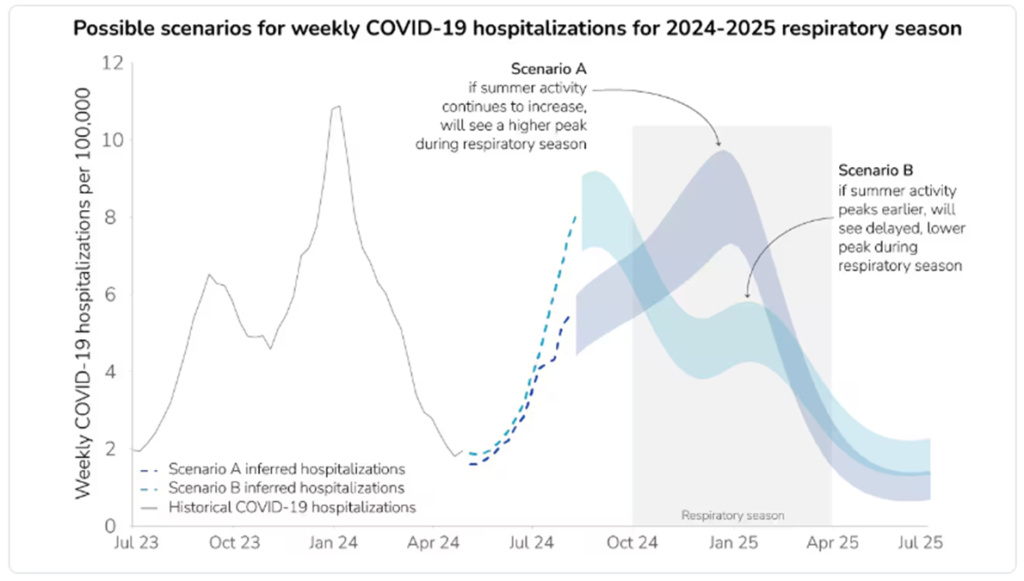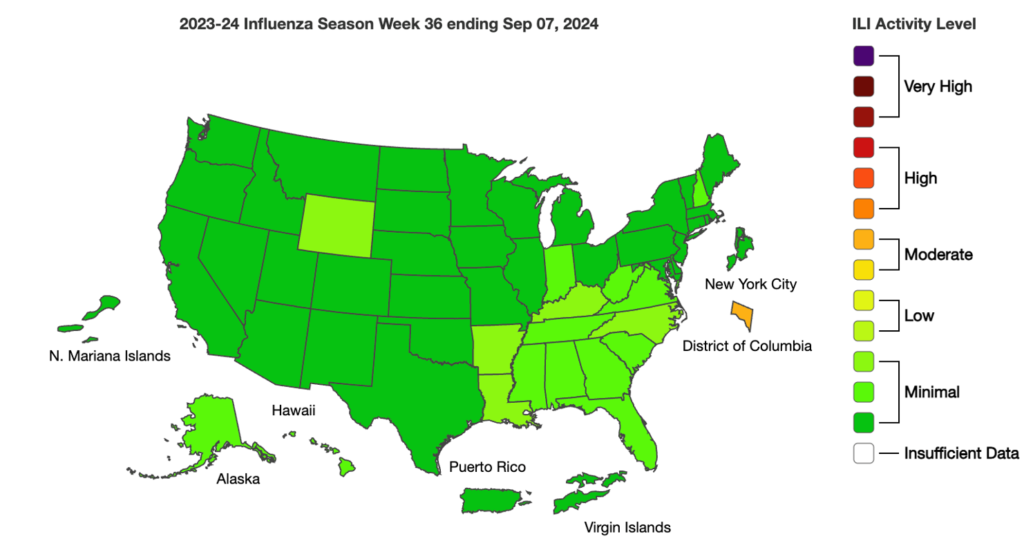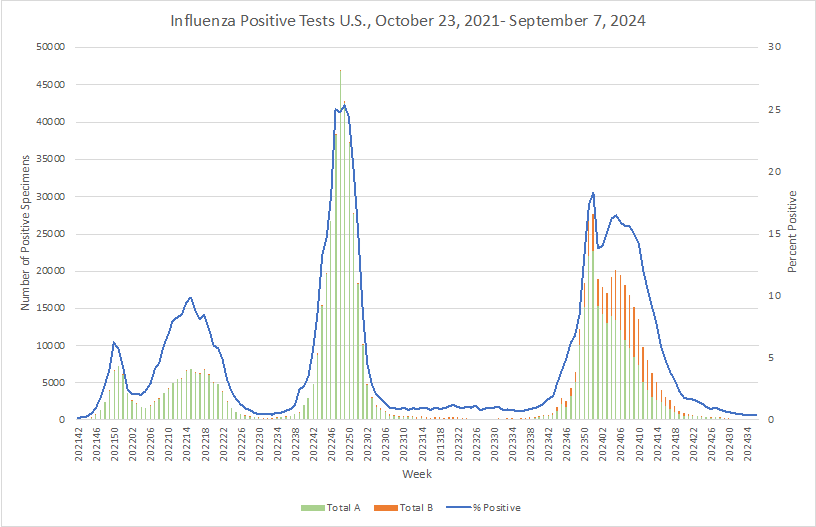Although CDC data is showing overall respiratory virus activity in the U.S. to be low, there is an exception for COVID-19, for which wastewater viral activity level is high. With wastewater monitoring providing an early warning of increased levels of infections, even when people don’t have symptoms, a “high” level can help to inform residents, particularly those who are most susceptible, that protections may need to be taken.
One such protection is that of vaccination, for which this season’s formulation is available. Unfortunately, studies are showing that vaccine hesitancy remains. An Ohio State study found that while 56% of adults have gotten or plan to get the flu shot this fall, only 43% have gotten or plan to get the COVID-19 vaccine. While some vaccinations are seen as a personal decision, one should also consider the potential impact on others when making that decision. For example, in August, Alabama and Tennessee closed two schools due to the high COVID levels and the potential for continued spread from airborne particles in the confined spaces, relegating more than a thousand students to remote learning while the schools were deep cleaned.
According to the CDC current data which allows you to zero in on data for your own state and county, wastewater viral activity levels for COVID in Alabama are trending as “very high” with Tennessee trending “high.” In fact, minimal or low levels are reported for only three states (Michigan, New York, and Rhode Island) and moderate in five (Nevada, Arizona, Georgia, West Virginia, and New Jersey) with all others high or very high levels (with the exception of three states for which data are not available – Oregon, North Dakota, and New Hampshire).
Other data are available on the CDC page, such as a graph of possible scenarios for the 2024-25 respiratory season based on the direction of the summer trend through the winter and next spring.

For more information on CDC expectations and trends in your area and recommended protections, visit the CDC webpage, or give TAG a call!
COVID Risk Matrix:

Influenza:


- Vaccine hesitancy continues. An Ohio State study found that 56% of adults have gotten or plan to get the flu shot this fall. But only 43% have gotten or plan to get the COVID-19 vaccine.
- The Nigeria Centre for Disease Control and Prevention said the country has recorded a total of 4,915 suspected cases of cerebrospinal meningitis from 24 of its states in the 2023 and 2024 seasons, an increase of 157% over the previous year. The case fatality rate is about 7%. Sub-Saharan Africa has more meningitis cases than elsewhere largely linked to hot and dusty conditions that occur more frequently due to shifts in climate.
- The Kalalau Trail, located within the Napali Coast State Wilderness Park in Kauai, HI is shut down after at least 3 dozen norovirus cases were reported. Unsanitary toilet facilities may have contributed to the outbreak.
- The WHO has prequalified Bavarian Nordic’s mpox vaccine, Jynneos, marking the first such approval for mpox and enabling organizations like UNICEF and Gavi to purchase doses for lower-income countries. This comes as Africa faces a growing mpox outbreak, with Morocco reporting its first case this year. The WHO Director-General has emphasized the need for urgent vaccine procurement and distribution. The WHO also launched a vaccine allocation tool, with 3.6 million doses pledged for Africa, though officials estimate 10 million doses are needed.





